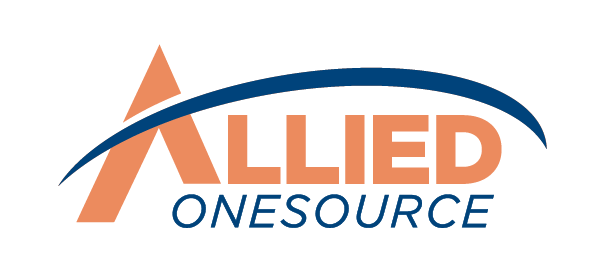How Call Centers Can Overcome Seasonal Staffing Shortages Without Sacrificing Customer Service
What do holiday rushes, open enrollment periods, and end-of-quarter deadlines have in common? Customer influx that can triple your normal call volume overnight. When your usual team of agents suddenly faces 200 percent more calls, even your most experienced representatives struggle to maintain quality service.
The challenge isn't just about hiring more people quickly. You need to scale without sacrificing the customer experience that builds loyalty. Smart workforce planning lets you handle seasonal spikes smoothly while keeping your current team engaged and your service standards intact. Here's how to prepare your call center for predictable demand surges.
8 Hacks for Contact Centers in Overcoming Seasonal Staffing Shortages
Here are some practical tips to maintain customer service quality and scale up without sacrificing the experience your customers expect.
1. Forecast Spikes Before They Overwhelm Your Team
Seasonal demand spikes follow predictable patterns, but most call centers still face staffing challenges. The key is analyzing your historical data to spot the trends before they hit. Review last year's call volumes to identify when spikes occurred, what types of issues drove the most calls, and which marketing campaigns or external events triggered the surges.
Use this data to create three demand scenarios and plan accordingly:
- Light spike (20-40 percent increase) - Your current team can handle the volume with extended hours or overtime shifts
- Moderate spike (50-80 percent increase) - You'll need temporary staff or cross-trained agents to cover additional queues
- Critical spike (100 percent + increase) - Full seasonal hiring, remote agents, and automation tools become essential
Map your hiring timelines, training schedules, and budget requirements around these forecasts. Even starting recruitment one week earlier can prevent the scramble when demand peaks.
Read More: Crucial Call Center Stats for Year-End Impact: Elevate Customer Satisfaction and Performance
2. Train a Flexible Team Before the Surge Hits
When call volume spikes, hiring more people isn’t your only option. And often, it’s not the fastest one. A smarter move is getting more flexibility from the team you already have.
Cross-training gives your current staff the tools to cover more ground. Imagine a customer service representative who can handle both billing and tech issues. That’s fewer transfers, shorter calls, and happier customers.
Start with a small group. Choose a handful of high performers to become your “swing team”; agents who can jump between queues based on where the pressure is. Train them using real scenarios they’re likely to face, not just generic policies or slide decks.
This kind of flexible bench gives you built-in agility when priorities shift. It also boosts morale, making agents feel more capable and trusted. Consequently, it cuts down on the need to scramble for outside help during every seasonal spike. This way, you’d be building strength from within, using people who already know your systems, your tone, and your customers.
3. Build Schedules Around When Customers Actually Call
Peak call volume rarely aligns with standard business hours, especially during seasonal surges. Instead of using rigid scheduling blocks, analyze your hourly call data to identify when customers actually need support. Whether demand spikes happen during evening hours, weekend periods, or lunch breaks, build your agent schedules around those real traffic patterns rather than traditional 9-to-5 coverage.
Consider flexible scheduling options like split shifts, shorter shifts, or four-day workweeks to match staffing with actual demand. You can also implement standby shifts where agents remain on-call during unpredictable peak times.
This approach not only improves coverage during busy periods but also makes positions more attractive to workers who prefer non-traditional hours, helping with both recruitment and retention during critical seasonal periods.
4. Use Remote Agents to Expand Capacity Quickly
When local talent pools are stretched thin during seasonal peaks, remote agents give you access to a wider, more flexible workforce. This approach works especially well for overflow queues, after-hours coverage, or bringing back high-performing former representatives as seasonal contractors who already understand your systems and processes.
According to a study by the Journal of Economics and Behavioral Studies, remote agents often outperform their in-office peers under pressure, resolving issues faster and improving customer satisfaction during peak periods.1
To make this model effective, establish clear expectations upfront: define specific shift requirements, time zone coverage, equipment standards, and communication protocols. When remote agents understand their role from day one, they can scale your capacity without compromising service quality.
5. Use On-Demand Staffing to Scale Without Losing Quality
Scaling fast doesn’t have to mean cutting corners, but only if you’re bringing in the right people.
On-demand staffing models, like short-term contractors or pre-vetted seasonal teams, give you speed and flexibility. But quality depends entirely on how you source those hires. That’s where staffing agencies like Allied OneSource come in. Instead of handing over resumes, we deliver candidates who are already screened, trained, and ready to perform on day one.
Temporary roles still carry permanent expectations. Every customer interaction should meet your standard service quality, regardless of staffing arrangements.
Read More: From Gaps to Growth: Bridging Client Support Demands
6. Automate Repetitive Tasks So Agents Can Focus on What Matters
Smart automation protects your agents' time during high-volume periods by handling routine inquiries that don't require human intervention. Direct simple tasks like order status checks, password resets, and basic policy questions to self-service tools such as chatbots, knowledge base articles, or Interactive Voice Response systems.
This frees your live agents to focus on complex issues that actually need personal attention. Equip your agents with AI-powered tools that support them during calls, including real-time prompts, knowledge base suggestions, and sentiment tracking features.
These resources help representatives resolve issues faster and with greater confidence. When automation handles the routine work, your team can deliver higher-quality service on the calls that matter most, even when volume spikes put pressure on your operation.
7. Keep Coaching Consistent Especially During High-Volume Times
When call volumes surge, it's tempting to skip coaching. But that's exactly when your team needs support the most.
Even short check-ins can make a huge difference. A five-minute huddle, a quick post-call review, or some peer feedback can help agents stay focused and avoid burnout. You don’t need lengthy training sessions. Just timely support to keep agents on track and prevent small issues from becoming bigger problems.
Automation can help too. Use speech analytics to identify recurring issues or patterns across calls. This lets you coach proactively, fixing problems before they affect your team’s performance. Your agents perform better when they feel supported, and that leads to better service for your customers.
Read More: Building a Culture of Continuous Feedback: The Key to Employee Development
8. Align Your Staffing Strategy with Customer Experience Goals
Simply adding more staff doesn’t guarantee better service. What truly matters most is s ensuring your staffing plan directly supports the customer experience you want to deliver during peak periods. Map out your customer journey to identify where frustration typically builds, when wait times become problematic, and which touchpoints create the most friction for callers.
Use these insights to strategically deploy your resources where they'll have the biggest impact. If customers frequently call about order tracking, create a dedicated team to handle those inquiries efficiently.
When hold times spike after marketing campaigns, align your staffing schedule with your promotional calendar to anticipate increased demand. Focus your workforce planning on solving actual customer pain points rather than simply filling shifts, and you'll build stronger relationships even during your busiest seasons.
Need to scale quickly without losing service quality?
At
Allied OneSource, we help contact centers plan ahead, fill positions fast, and keep service levels high without lowering standards. Whether you need short-term agents, remote teams, or help creating a flexible workforce, we’re ready to support you.
Let’s explore smarter ways to grow your team so your customers never feel the pressure of seasonal spikes again. Ready to build your flexible, high-quality support team? Contact Us today!
Reference
1. Strandt, E. (2024, November 11). The Role of Remote Work in Enhancing Employee Productivity: Evidence from the US-Based Tech Industry During the COVID-19 Pandemic. Journal of Economics and Behavioral Studies. https://ojs.amhinternational.com/index.php/jebs/article/view/4244











